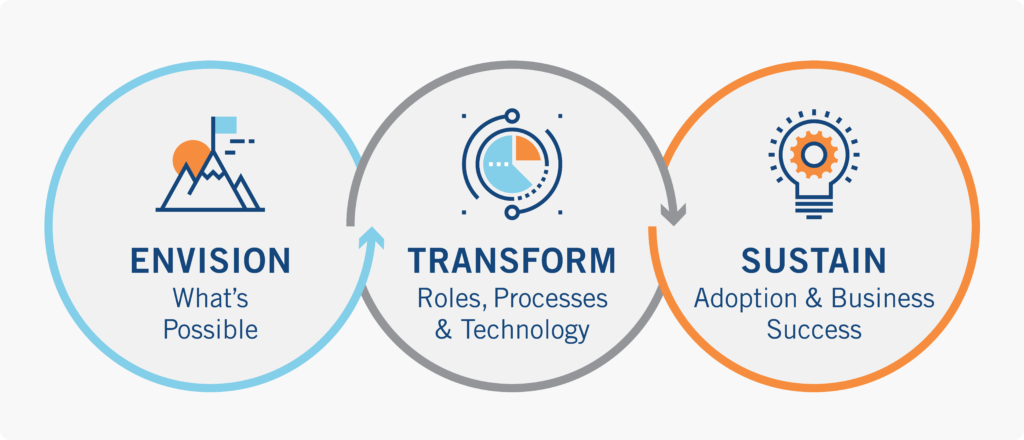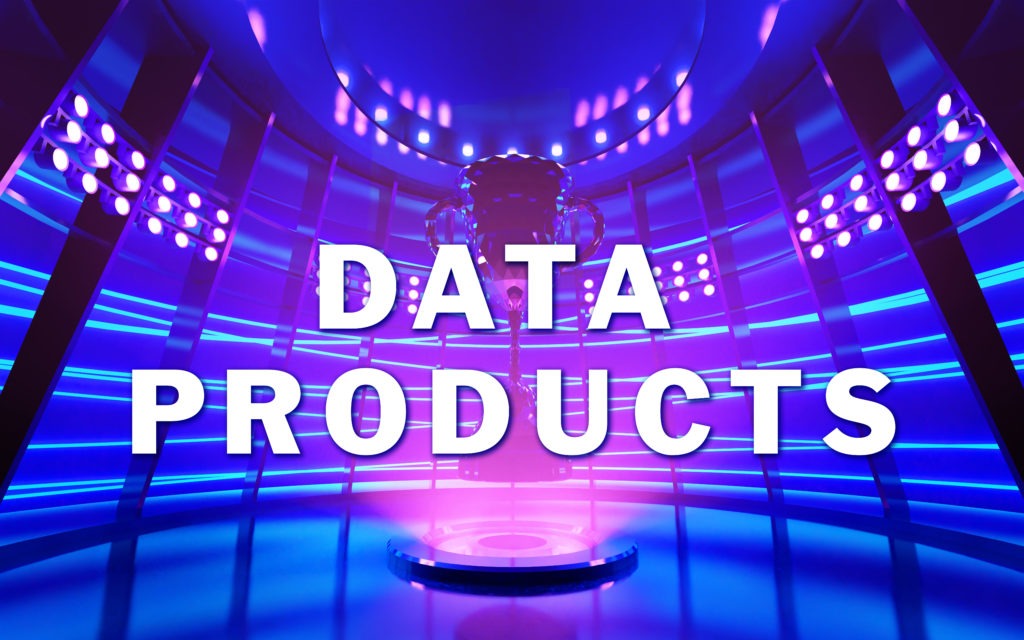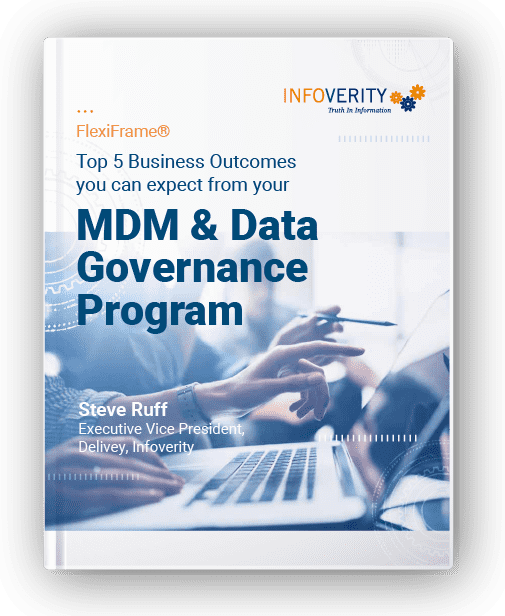By 2025, the amount of data worldwide will reach 175 zettabytes – that’s 175 trillion gigabytes, according to Seagate and IDC. No doubt, your organization has its share of that worldwide total. But your data is likely fragmented and/or unmanaged.
Managing your data is no longer something a business can get around to later; data management has become a business imperative. To remain competitive, companies need to quickly identify the most valuable data and put that data to work across the enterprise, at scale and in as close to real time as possible. Master data is the core which systems and business processes rely upon to power the business. A properly implemented master data management (MDM) system and sustainable MDM and Governance program are the keys to unlocking this potential.
Why should companies create a master data management (MDM) program
Mastering your business-critical data elements and defining your data products will result in increased employee efficiency, enhanced customer experience, and realization of overarching business strategies. With a single view of truth, the right data becomes readily accessible and trusted, which enables sales and marketing teams to better engage customers and deliver a personalized and consistent customer experience throughout brand interactions and across all channels.
As your organization begins to define your master data management (MDM) journey, keep in mind that you’re creating a valuable product. But what does it mean for data to become a product? And where do you start? With a hat tip to Stephen Covey, begin with the end in mind. Start with your desired business outcome, work backwards from that use case, and identify what data points or critical data elements are necessary to support that outcome.
The good news: that end is not as far away as you might think. MDM can be delivered in a cost effective way for organizations of all sizes. And most organizations that begin an MDM program see concrete business value in three-to-five months.
Key areas of measurement on the journey are:
- Completeness: What data is missing or unusable?
- Conformity: What data does not adhere to standard definitions or governance measures? in a non-standard format?
- Consistency: What data values or attribution do not align with business rules or defined standards?
- Duplication: What data entities or attribution are inaccurately repeated?
- Accuracy: What data is incorrect, latent or out of date?
- Integrity: What data is missing or not referenced?
Creating an MDM Program
There are three primary phases that define the foundation of a successful MDM Program: Envision (Strategy & Planning), Transform (Implementation), and Sustain (Ongoing Support & Change Management)

There are common building blocks to MDM Programs that Infoverity employs with our clients to set the foundation and ensure best practices for long-term success. However, each company’s MDM journey consists of distinct goals, use cases, and challenges. Here are two unique client stories to bring to life how MDM delivers business value.
Client Story: A Fashion and Beauty Retailer
In the retail world, predictive insights on which customers are at risk to churn make it possible for retailers to take proactive measures to retain these customers. For one fashion and beauty products retailer in particular, the desired business outcome was increased connectedness and engagement with its customer base and, more specifically, to convert casual shoppers into long-term brand loyalists.
On a broad level, this fashion and beauty retailer had to identify, curate, and operationalize the data it currently possessed about shoppers that touched the brand at some point — even months or years ago. Infoverity combed through a variety of disparate data sources to create a consolidated view of the retailer’s customer base, including linking that information to shopping habits and preferences. The retailer needed to know:
- Who is each shopper?
- What products did loyal customers buy?
- What products did casual shoppers buy?
- Were they coming to the store to get a service and if so, did they also buy a product?
- Where do they live?
- What is their history with the brand?
- Do they have family members who might be interested in the brand?
Next, Infoverity worked with the retailer to obtain the missing information needed to create a 360-degree view of each shopper and a unified customer profile, which enabled the retailer to create a seamless cross-channel experience. Using loyalty programs and targeted advertising, the retailer was then able to determine what products interested their casual shoppers and use coupons to upsell them to buy related products.
As a result of these efforts, the retailer was able to create personalized customer experiences, improve customer services within store and across online channels, increase campaign effectiveness, and decrease spend on catalog mailings and shipments through verified addresses and households.
Client Story: An Animal Health Company
Another Infoverity client was seeking the ability to perform aggregate spend analysis to better understand its supplier base and get a clear picture of its credit risks, supply chain risks, and potential buying power. The client, in the animal health sector, has thousands of vendors ranging from parts, finished goods and medical devices to pharmaceutical products and technology services.
As Infoverity analyzed the data, it became clear that what appeared to be multiple different vendors actually were all under a single corporate umbrella. If that single entity experienced supply chain disruptions, the animal health client was more exposed to more risk than previously known. On the other hand, the animal health client now realized that based on the volume of business, it had leverage to ask for more favorable rates and terms from the overall corporation.
These new insights were propagated to the analytics platform for the business, enabling analysts to view aggregate roll-ups as well as drill down into the legal entity hierarchies and product catalogs across the supplier base.
Improvement in Your Own Organization
In addition to better value from customer relationships, an MDM program can deliver internal benefits with cross-business function collaboration and data-driven decision making. Your sales and marketing departments can operate from the same trusted list of contacts, prospects, and customers for lead-gen activities and executing customer growth and farming strategies. Finance can better measure performance of key product categories as compared against R&D investments. Your supply chain and procurement departments can collaborate more effectively on suppliers and negotiations, aiding in purchasing efficiencies for raw materials in manufacturing or finished goods for retail.
This improved partnering and teamwork translates directly to increased productivity and better culture. With access to trusted, easily shared information on a single screen, employees are able to work together efficiently, regardless of location or job function. Trusted data removes one more obstacle that can get in the way, delivering more teamwork and faster results with less effort.
Conclusion
MDM is the bedrock for your organization’s digital transformation goals and can help you activate key strategies that will propel your business. Investing in your data is a requirement in today’s business landscape. When your data management program is effectively planned and implemented, it will unlock new capabilities and deliver on the promise of tangible business benefits faster than you think.
About Infoverity
Founded in 2011, Infoverity is a leading systems integrator and global professional services firm driven to simplify and maximize the value of their clients’ information. Infoverity provides MDM and PIM Strategy and Implementation, Data Governance and Analytics, Content Management, Data Integration, Enterprise Hosting, and Managed Services that help large enterprises in the retail, consumer goods, manufacturing, financial and healthcare sectors. Infoverity, a 100% employee-owned company, has global headquarters is in Dublin, Ohio, and the EMEA headquarters and Global Development Center is in Valencia, Spain. Additional offices are located in Germany and India.
For more information on Infoverity solutions, contact us today.


